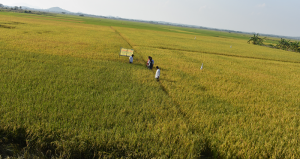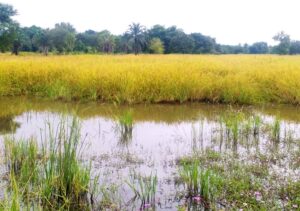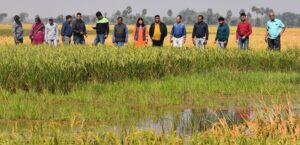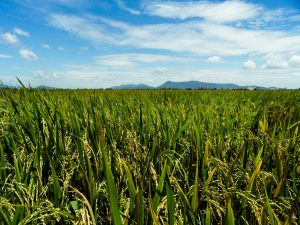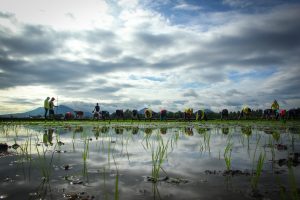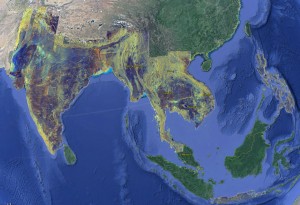
Between 1979 and 2005, rice area in China decreased from 32.4 to 28.8 million hectares. At the same time, average yields went up from 4.2 tons per hectare in 1979 to about 6.3 tons per hectare in 1997 and thereafter. Because of these opposite trends, annual Chinese rice production has been fairly stable at 170–190 million tons since 1983.1 But this apparent stability conceals major shifts in the location and cropping patterns of rice in China.
Rice cultivation in China is moving northward. From 1979 to 2005, the southern province of Guangdong lost half its rice area, a decrease of 85,000 hectares per year. Over the same period, the northeastern province of Heilongjiang gained 64,000 hectares per year. Together, the four northern provinces of Liaoning, Jilin, Nei Mongol, and Heilongjiang had 2.7% of the Chinese rice area in 1979 and 11.5% in 2005. These provinces have also seen relatively strong increases in yield. In Heilongjiang, for example, yields have gone up 150 kilograms per hectare per year—almost twice the annual yield gain for the whole of China.
Economic development has strongly contributed to the decrease in rice area in the south. Because of an increased demand for off-farm labor, double cropping of rice—only possible in southern China—is being replaced by a more labor efficient single rice crop. Some of the land and labor that were used for rice production are now used to produce high-value vegetable crops catering to wealthier consumers who have diversified their diet and eat less rice. Other rice lands have been used for construction.
The decline in rice area in the relatively poor southwestern provinces of Guizhou and Yunnan has been much less than that of other southern provinces.
However, economic development does not seem to explain the increase in rice production in the northeast. The main income gradient in China is from east to west and not from north to south.
The increase in rice area in the north may be related to an increased demand for japonica-type rice, which is better adapted to temperate climates, or to an expansion of irrigation infrastructure. Another factor that may have contributed is climate change. Since the mid-1960s, Earth has experienced very strong global warming of about 0.03 ºC per year.2 Warming has been strongest at high latitudes, and minimum temperature has increased more than maximum temperature. Warming in northeast China has been particularly strong (Map 3). The average minimum temperature in Heilongjiang is now about 2.5 ºC higher than it was in the early 1960s!
A yield decline associated with increasing minimum temperatures has been observed in long-term trials at the International Rice Research Institute in the Philippines.3 But, in relatively cool areas such as Heilongjiang, warming may have contributed to higher yields through a longer growing season and reduced cold stress.
Only a few studies have analyzed the influence of past climate change on crop production.4 A challenge in such analyses is disentangling the role of climate change from that of other factors influencing land use. For example, although warming increases the potential for double and triple cropping of rice, prevailing economic conditions are nudging farmers in the opposite direction.
The spatio-temporal coincidence of warming and rice area expansion in northern China is striking, but a much more refined analysis is necessary to assess whether warming is contributing to this expansion. In areas such as northern China, which have witnessed rapid climate change over the past decades, looking backward can improve our ability to predict the future.
_________________________________________
Dr. Hijmans is a geographer in the IRRI Social Sciences Division.

